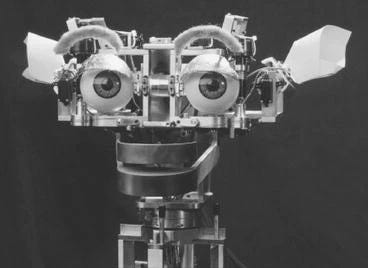The holidays in 2020 might look different for most people, but one aspect that hasn’t changed is the real-life Grinch of Christmas: porch pirates. Seemingly determined the ruin someone’s day, porch pirates stomp through neighborhoods each year stealing packages off the front porch of unsuspecting Amazon enthusiasts in the hopes that whatever is inside will make the guilt worth it.
Except that I actually think most porch pirates act impulsively and commit crimes of opportunity more so than deliberate acts of evil… but more on that later.
Luckily for us, each year the incredibly brilliant Youtuber and former NASA and Apple engineer Mark Rober busts unsuspicious package stealers with an incredible feat of over-engineered, glitter-bomb, fart-spray, police-scanner magic. Below is the trending Youtube video of the 3rd version of his glitter bomb hijinks with over 17 million views as of the time of this writing.
I highly recommend checking out the video before continuing as it is extremely entertaining and family-friendly but it’s not strictly necessary. The best part is that he conceals cameras in these devices so we can all see the porch pirates’ reactions.
One thing that stood out to me in this video is how cruel people can be when they think no one is watching. What kind of person steals presents from people on Christmas? In the video, you see people gleefully giggling as they open the package as if stealing is like being tickled. At 12:55 you see a mother and son work together to take a package and the child utters that it “feels good to steal.”
So what’s behind the minds that decided to steal these packages?
Thinking, Fast and Slow
Earlier, I argued that I think most package stealing is an impulsive act of opportunity. You see a package lying in plain sight, you think no one is watching, and you aren’t able to control the impulse of taking the package for yourself. I’m more confident that people aren’t thinking clearly because the package the Mark Rober plants is a supposed Bose product called “Buzz Buds” which doesn’t exist and is labeled with references to Home Alone’s Buzz McCallister.
This kind of impulsive act is what Nobel Prize winner Daniel Kahneman calls System 1 thinking in his book Thinking, Fast and Slow. In his book, Kahneman describes the tension between the automatic, impulsive mechanism of System 1 thinking:
It’s the system you use when someone sketchy enters the train and you instinctively turn towards the door and what makes you eat the entire bag of chips in front of the TV when you just wanted to have a small bowl.
and the conscious, deliberative System 2 thinking:
It helps you exert self-control and deliberately focus your attention. This system is at work when you’re meeting a friend and trying to spot them in a huge crowd of people, as it helps you recall how they look and filter out all these other people
I would argue that package stealing is a result of System 1 thinking most of the time. The question is: what do we know about System 1 thinking that we can use to fend off these porch pirates?
The Watching Eyes Effect
The interesting thing about System 1 thinking is that it is easily manipulatable. Small cues, even unconscious ones, can have huge effects on the behavior resulting from System 1 thinking. For example, many studies have found that people act more altruistically or “prosocially” when in public version private. Because humans have specialized brain structures for storing and recognizing faces, psychologists have called this phenomenon the Watching Eyes Effect.
If we wanted to use this research to prevent crimes like package stealing, it would be impractical to have a human watching every porch. Because of this, one study wondered if our brains could be fooled into acting more charitably even when our anonymity hasn’t technically changed.
To test this hypothesis, the researchers had college students participate in an economics game in which the students could choose to either give tokens to the public pot that would be split amongst the participants or keep tokens for themselves. In the game, the players were all anonymous to each other and would never know who they played the game with.
To try and fool the students’ brains into being more charitable, one condition showed a picture of the MIT robot Kismet during the game which has a similar facial structure to humans but is made of obviously non-human parts in every feature except for the eyes.
The researchers hypothesized that this image could activate the parts of the brain that detect eyes and this would make the players more charitable even though simply showing a picture of this robot doesn’t change the fact that the players are completely anonymous in their decision-making.
Remarkably, in every round, the students that played the game with Kismet watching were more charitable than their counterparts.
It’s amazing that just the presence of human-like eyes can change our charitable behavior and lead us to a more altruistic person.
It turns out that you don’t even need the presence of eyes. Another study showed that simply posting a sign that read “Cycle thieves, we are watching you” was enough to reduce bicycle theft by 62%.
So what do we take away from this? First, I think it would be interesting next year if Mark Rober posted a sign signaling that the package was under surveillance and see if that decreased package theft. Second, even if you don’t have a porch camera, you should post a sign outside your house saying that there is a camera and that may be enough to deter these porch pirates. Going forward, I’d love to see more examples of people using behavioral science to fix real-world problems like crime.
🎉 I was interviewed by Substack!
A few weeks ago, I had the pleasure of answering some excellent questions from the company behind the technology that delivers this newsletter. If you missed it, you can check it out here to learn more about why I do what I do and why Synapse exists.
What to Read: Clayton Mansel is Studying Our Brains
I realize that many of the subscribers I’ve gained over the last few weeks have come from this story, and so if that is you, I am grateful you are here and I hope you find value in what I write each week.
👓 A new reading experience from Substack
If you haven’t checked out other amazing Substack newsletters you definitely should. Casey Newton is writing about tech on Platformer. Andrew Sullivan is writing about politics and the world around us in The Weekly Dish. Emily Atkin is writing about Climate Change on HEATED.
If you’re like me and find it difficult to keep up with all of this quality writing in your inbox, then luckily for us Substack has rolled out a new reader experience called Substack Reader where you can read my work and others outside of your inbox. You can even import RSS feeds from your other favorite blogs and have a one-stop-shop for all of your online reading!
📆 Upcoming Schedule
With the holidays rapidly approaching I wanted to let all of you know that the Synapse newsletters going out on December 27th and January 3rd are going to be a little different.
On December 27th, I’m going to send out a special “Synapse Feedback” edition in which I present and respond to a lot of the amazing feedback and thoughts I’ve received on the last few newsletters. If you have any new questions or feedback you want to talk about, now is your chance to get in touch!
On January 3rd, there won’t be any original content, but there will be a “Synapse Year-end Review” in which I reflect on the essays I’ve written this year, the threads that connect them and give you new subscribers a chance to catch up on any essay you might have missed!
🐦 Tweet of the Week
⚡️P.S. If you're new here and want to read more of the Synapse Newsletter each Sunday, subscribe below!⚡️









